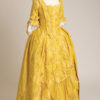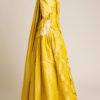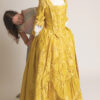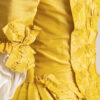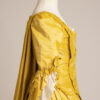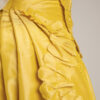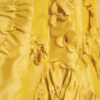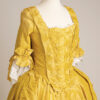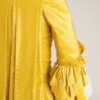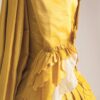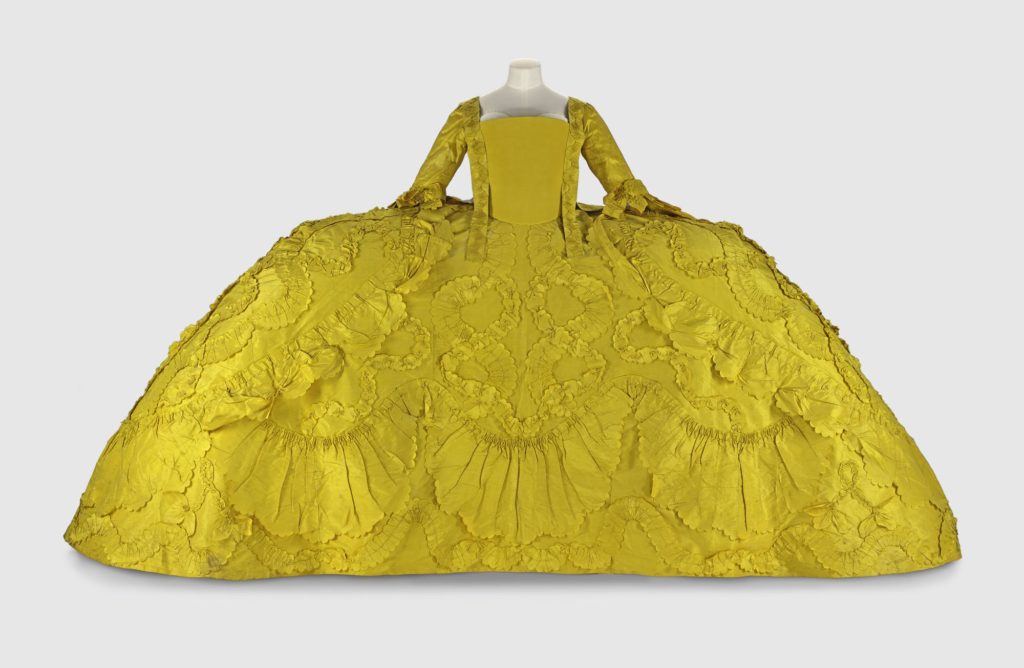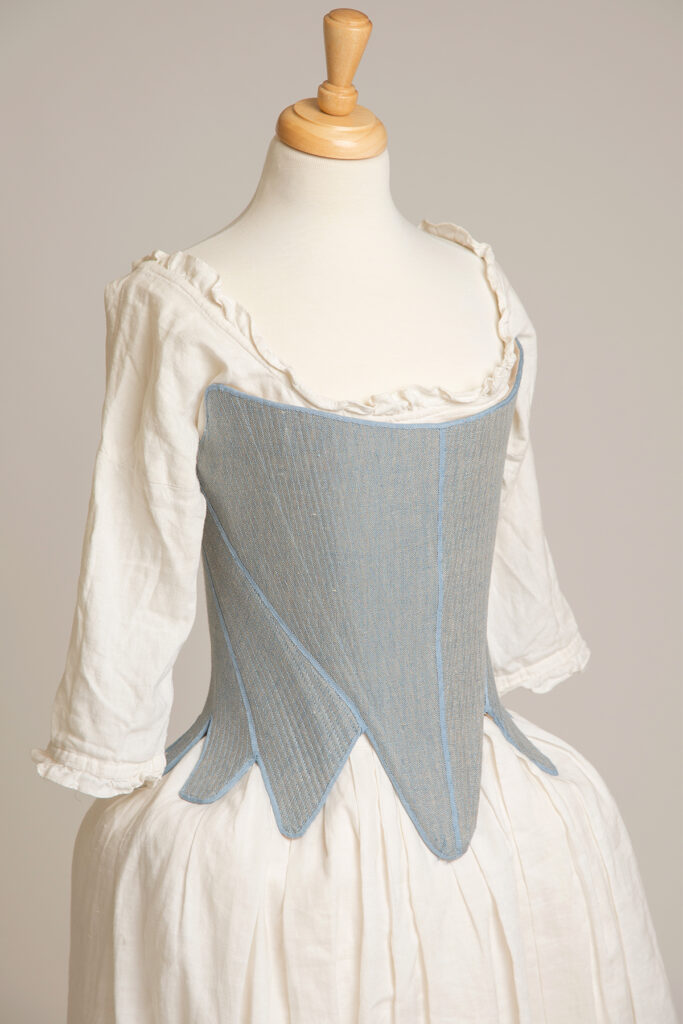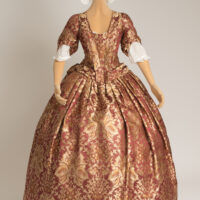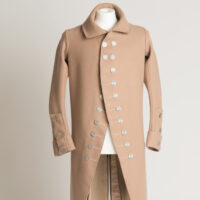Product Description
c.1750s Yellow Sack Back Gown
The original to this gown is insane and amazing all in the same breath!
(see the history tab for a photo!)
It’s massive, yellow and with a crazy amount of trim, and our version of this gown has been designed to tame it down just a wee tad and has turned it into a sack back gown.
This gown features:
- Sack Back pleats – deep and properly done
- Trim covers the robing, the stomacher, the front edges of the skirts and the central panel of the petticoat
- The whole ensemble is made up of 3 parts – the main outer gown, the stomacher and the petticoat
- Three tiered ruffles at the sleeves
- The bodice is lined – and this gown features a lace up centre back lining.
- The gown pictured doesn’t feature lead weights in the sleeve but these can be added at request.
So, how does this work?
This gown picture here, has been made up as a sample for you to see the trimming styles, the ruffles and all its design features in 3D form. Everything down from the pleat arrangements, the robings etc has been based on originals and this gown confirms what you will be receiving in a visual manner – though obviously yours will be made up in a different size, to fit you.
When you order, we start the discussion about your undergarments, your measurements, we’ll chat fabric, finishing dates, and any other detail that comes up.
We then require a 25% deposit up front and we’re all ago to start your garment.
(Please note that the gown does not come with any undergarments provided)
Our Research
So as already mentioned in the many pages of this site, the gowns are completely constructed using original techniques. There have been many years of research and study sessions attended in our quest to truly understand 18th century sewing, and if you order a garment from us, you will get all that knowledge and learning bundled up in your gown!
Each gown is 100% hand sewn – and not just hand sewn for the sake of saying it – but hand sewn because we are using the original construction methods as researched on the originals. We want your dress to feel real when you wear it and to look like an original gown from the museums!
The Materials:
So the main fabric of the gown is not included in the price – and is pretty much up to you as to colour, pattern and style. 🙂 The reason why it’s not included in the price is that materials like silk can range from £9 a metre to £900 and many of our clients have a specific design in mind. We help you search for your fabric and can provide websites and suggested looking places as you dig about for your perfect fabric.
Fabric wise, from our side it is MUCH easier to sew natural fibres such as silks and linens – and you, as the customer will get a better looking garment in a better fabric – but it is truly up to you. We will discuss the amount of fabric you may need to purchase in the build up emails to having your gown as depending on size, height, trimming requirements – as this may vary.
We happily provide the linens for the lining and the rest of the haberdashery used on the gown, including lead weights if you wanted to have that option. 🙂
http://https://youtu.be/vnao6ufBhU0


